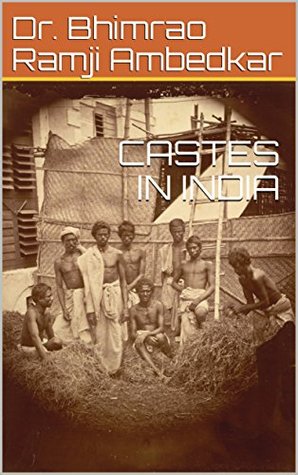More on this book
Community
Kindle Notes & Highlights
According to well-known ethnologists, the population of India is a mixture of Aryans, Dravidians, Mongolians and Scythians.
Ethnically all people are heterogeneous. It is the unity of culture that is the basis of homogeneity.
Endogamy is the only characteristic that is peculiar to caste, and if we succeed in showing how endogamy is maintained, we shall practically have proved the genesis and also the mechanism of Caste.
Complex though it be in its general working the Hindu Society, even to a superficial observer, presents three singular uxorial customs, namely : (i) Sati or the burning of the widow on the funeral pyre of her deceased husband. (ii) Enforced widowhood by which a widow is not allowed to remarry. (iii) Girl marriage.
Sati has been honoured (Cf. A. K. Coomaraswamy, Sati: A Defence of the Eastern Woman in the British Sociological Review, Vol. VI, 1913) because it is a" proof of the perfect unity of body and soul " between husband and wife and of " devotion beyond the grave ", because it embodied the ideal of wifehood, which is well expressed by Uma when she said, " Devotion to her Lord is woman's honour, it is her eternal heaven : and 0 Maheshvara ", she adds with a most touching human cry, " I desire not paradise itself if thou are not satisfied with me !
The eulogy in honour of girl marriage is reported by Dr. Ketkar to be as follows : " A really faithful man or woman ought not to feel affection for a woman or a man other than the one with whom he or she is united. Such purity is compulsory not only after marriage, but even before marriage, for that is the only correct ideal of chastity. No maiden could be considered pure if she feels love for a man other than the one to whom she might be married. As she does not know to whom she is going to be married, she must not feel affection, for any man at all before marriage. If she does so, it is a
...more
high-flown and ingenious sophistry indicates why these institutions were honoured, but does not tell us why they were practiced. My own interpretation is that they were honoured because they were practiced.
To say that individuals make up society is trivial ; society is always composed of classes. It may be an exaggeration to assert the theory of class-conflict, but the existence of definite classes in a society is a fact. Their basis may differ. They may be economic or intellectual or social, but an individual in a society is always a member of a class. This is a universal fact and early Hindu society could not have been an exception to this rule, and, as a matter of fact, we know it was not.
A Caste is an Enclosed Class.
There is a strong belief in the mind of orthodox Hindus that the Hindu Society was somehow moulded into the framework of the Caste System and that it is an organization consciously created by the Shastras. Not only does this belief exist, but it is being justified on the ground that it cannot but be good, because it is ordained by the Shastras and the Shastras cannot be wrong. I
Western scholars, probably not much given to hero-worship, have attempted other explanations. The nuclei, round which have " formed " the various castes in India, are, according to them: (1) occupation; (2) survivals of tribal organization etc.; (3) the rise of new belief; (4) cross-breeding and (5) migration.
(1) Brahmins or the priestly class; (2) the Kshatriya, or the military class ; (3) the Vaishya, or the merchant class and (4) the Shudra, or the artisan and menial class. Particular attention has to be paid to the fact that this was essentially a class system, in which individuals, when qualified, could change their class, and therefore classes did change their personnel. At some time in the history of the Hindus, the priestly class socially detached itself from the rest of the body of people and through a closed-door policy became a caste by itself . The other classes being subject to the law
...more
This sub-division of a society is quite natural. But the unnatural thing about these sub-divisions is that they have lost the open-door character of the class system and have become self-enclosed units called castes. The question is: were they compelled to close their doors and become endogamous, of did they close them of their own accord ? I submit that there is a double line of answer: Some closed the door : Others found it closed against them. The one is a psychological interpretation and the other is mechanistic, but they are complementary and both are necessary to explain the phenomena of
...more
It is " the infection of imitation " that caught all these sub-divisions on their onward march of differentiation and has turned them into castes.


